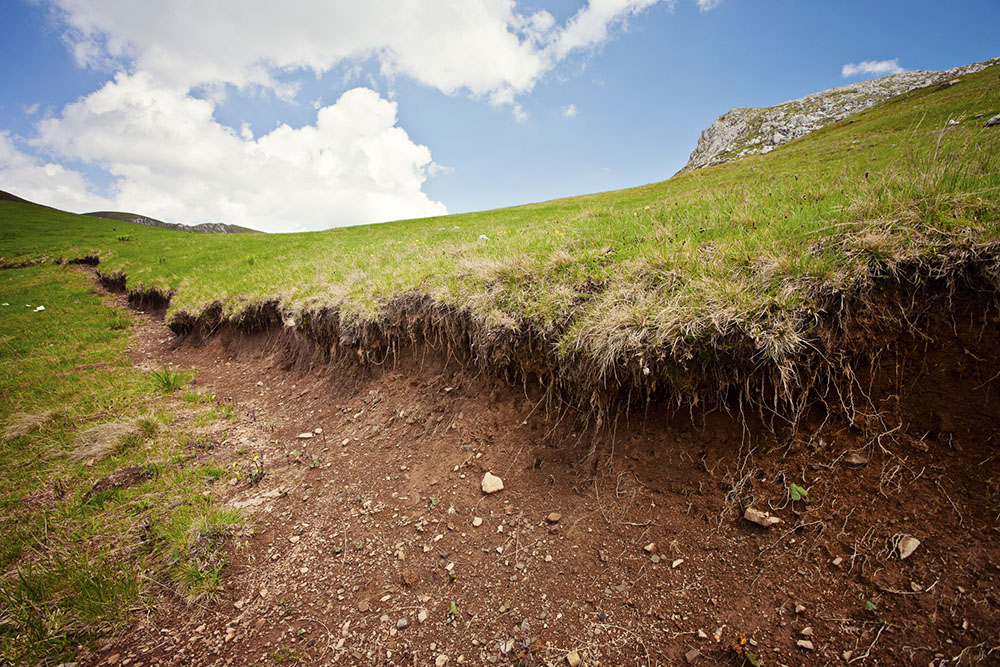Why Land Erosion Can be Dangerous
When land is cleared for a construction project, one of the most important concerns is that it drains well, and every effort should be made to keep land erosion to a minimum. When developing a new site, sloping the land to about 2 – 5%, helps ensure the water is diverted correctly and drains naturally.
To keep land erosion to a minimum, if problem areas develop, the best way to handle the problem is to re-grade and re-slope the area so that the water drains correctly.
How Land Erosion Control Protects Construction Sites
The main concern for the surrounding environment of a land clearing site is the water flowing and carrying hazardous materials into rivers, drains or any local water source that could be harmful to people or animals.
Land clearing equipment is heavy and that combined with the digging causes the soil to loosen and cause land erosion. Loose sediment must be contained within the site, this is usually achieved by placing silt or filter fencing to keep the sediment from entering local water sources.
Construction projects must use erosion control measures in order to protect what is being built as well as the surrounding area. Therefore hiring a professional company, such as Rancourt Land Clearing, who are committed to preserving the environment, while being experts in their field is something that should be kept in mind.
What Causes Land Erosion?
Water is the biggest contributor to erosion, often caused by heavy rainfall which saturates the ground. Parts of small hillsides can fall away as the ground becomes unstable.
When erosion occurs in urban areas, preventative measures must be taken to protect the surrounding assets. Whether it be buildings, roadways or waterways, land erosion control comes down to protecting what we value.
Types of Erosion Control
DRAIN DITCHES AND BAYOUS – These are both a very important part of any development. To be effective these large flood control areas must be carefully designed so that the water flow doesn’t constantly wash away the soil when storm waters come through.
DETENTION PONDS – Can help manage large amounts of rain by collecting the water and slowly releasing it. This helps protect areas that cannot handle a large amount of heavy rain and are subject to flooding. Detention ponds are useful in larger commercial and residential areas and are designed to move water out of the high traffic areas.
RETAINING WALLS – A retaining wall is very effective around residential lakes and ponds where the water meets the shore. These features often have a lot of activity around them, so keeping the banks secure helps protect not only the water, but also the people using the area.
DRIVEWAY CULVERTS – Driveways can be built so that they help water flow towards a drain. A simple culvert using a pipe covered with dirt can be installed so that the water drains away underneath.
ROADWAY DITCHES – The majority of our roadways are built with ditches on each side so that the excess water can flow to other areas during rainy times. These ditches work very well by keeping the water away from the road so that erosion does not become an issue and weaken the structure of the road.
Geo-matting, which has many different thick gridded sections, is a popular way to create a more solid grounding. Dirt, gravel or even seeded soil can be used to create a solid slope that will function properly for years to come.
Strengthening the ground can also be achieved by planting vegetation on the slope. The roots ability to strengthen the footing will also help slow down and control the erosion process.
The following PDF from the Forestry Service of the US Department of Agriculture highlights some of the techniques mentioned above.
